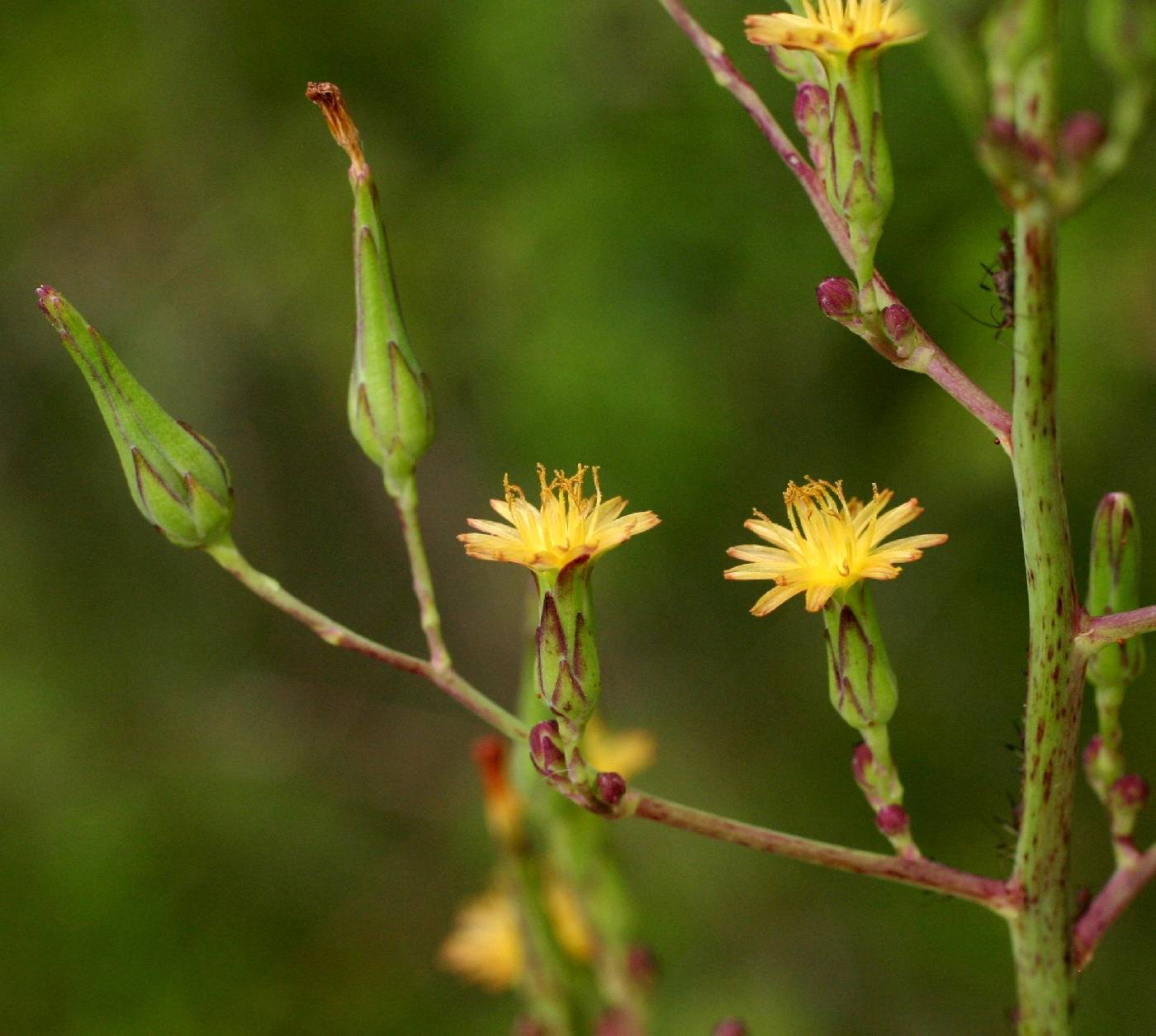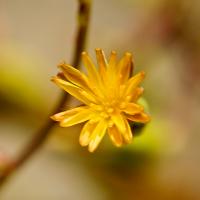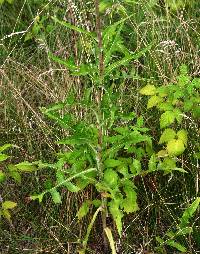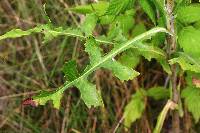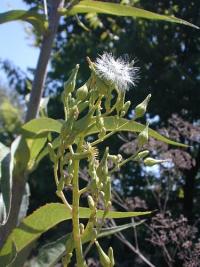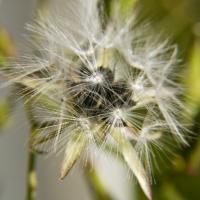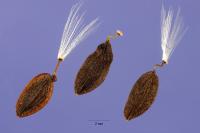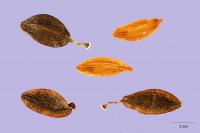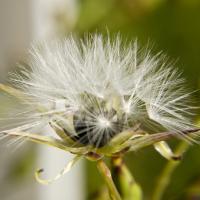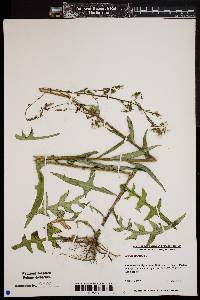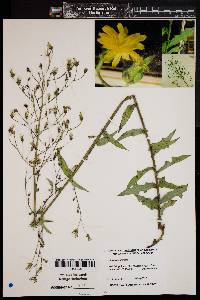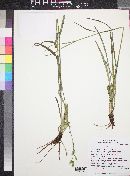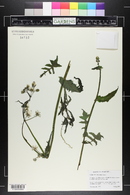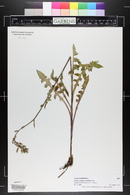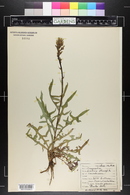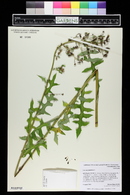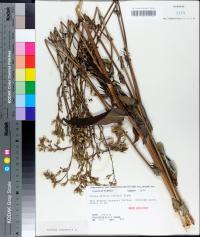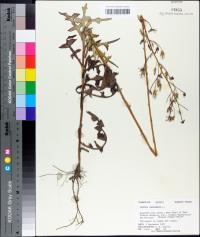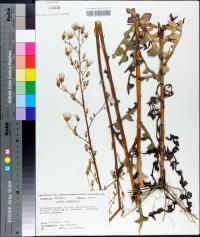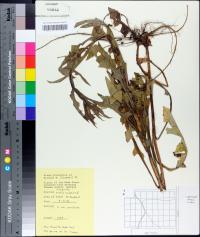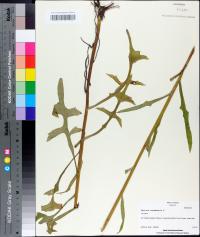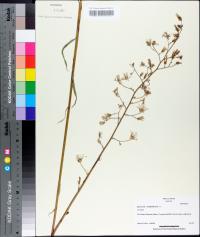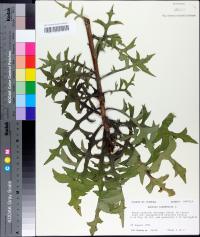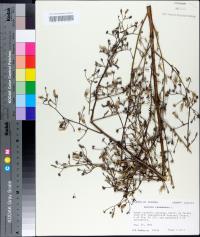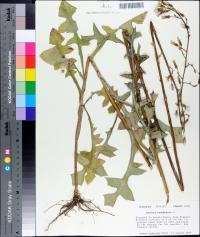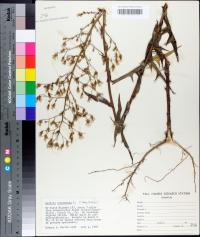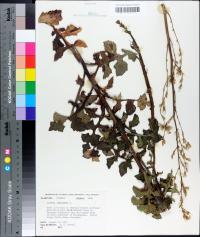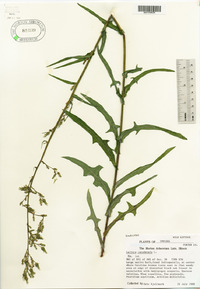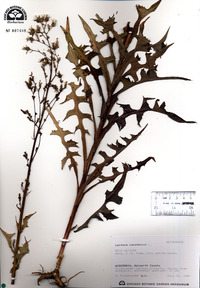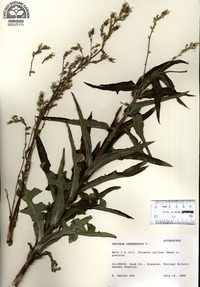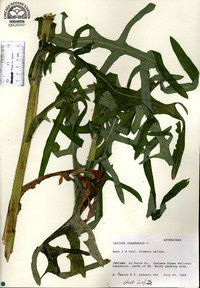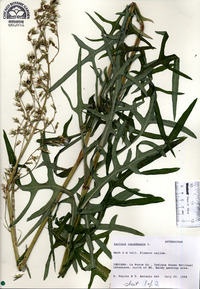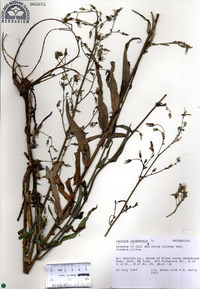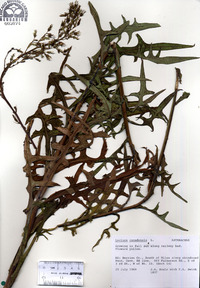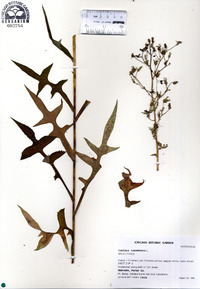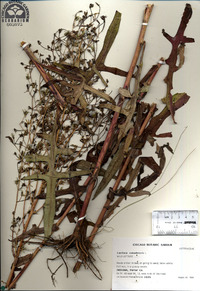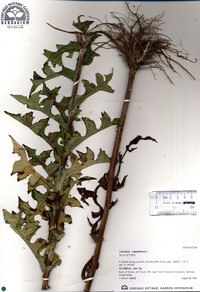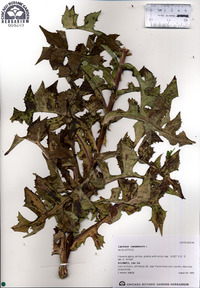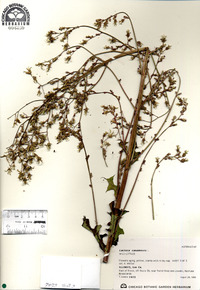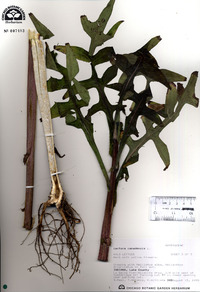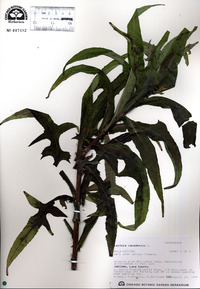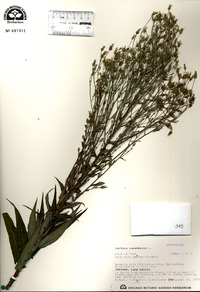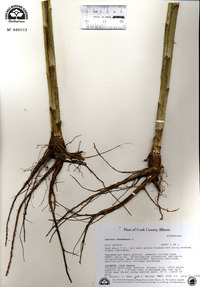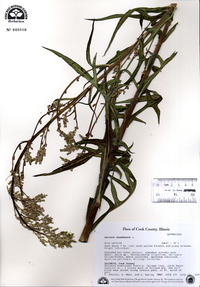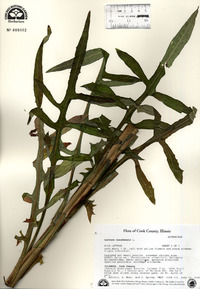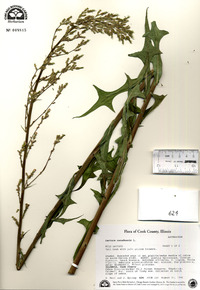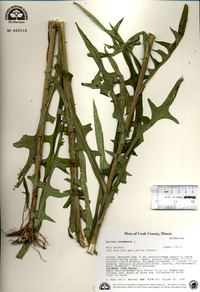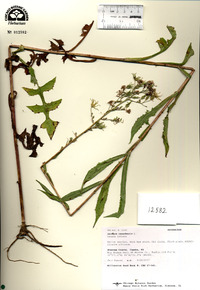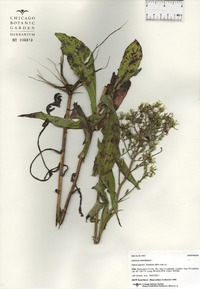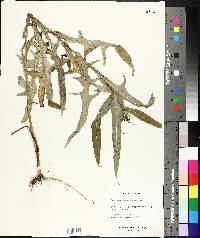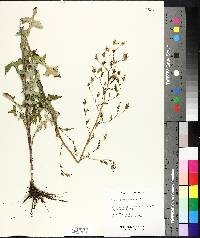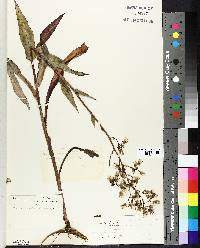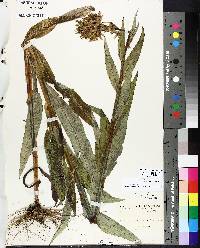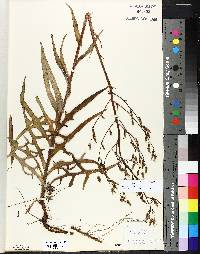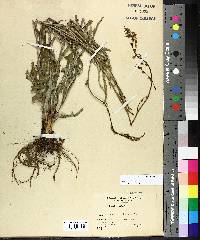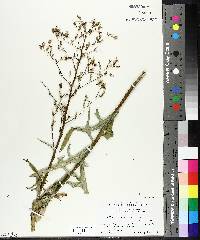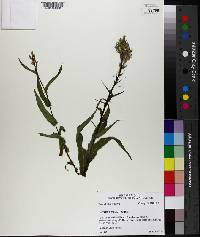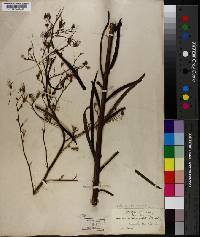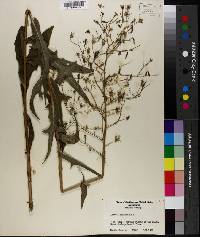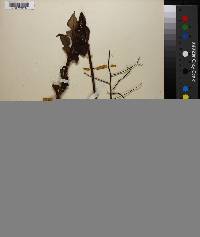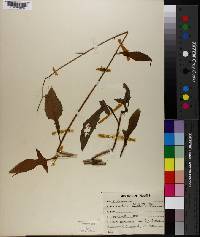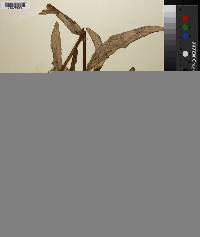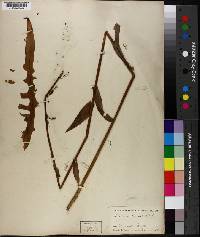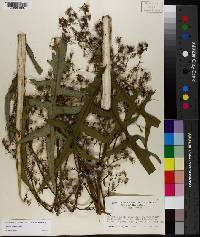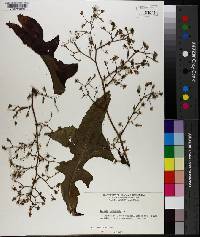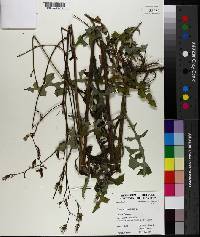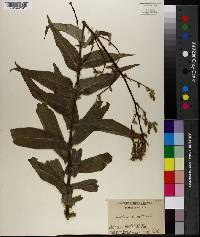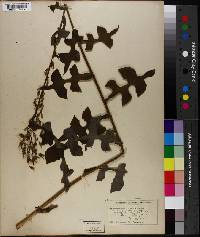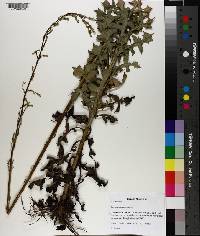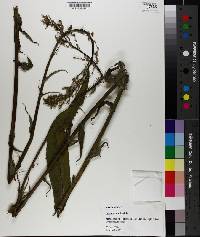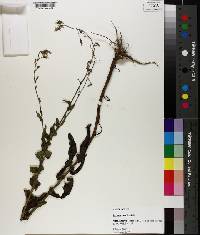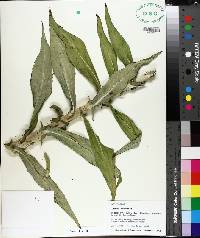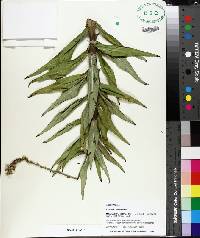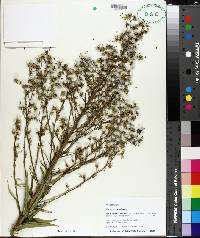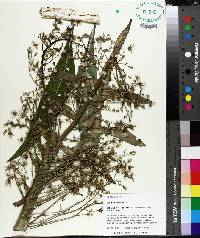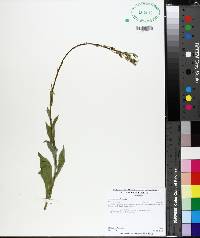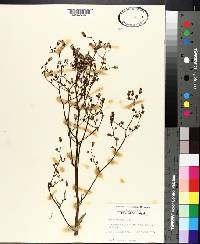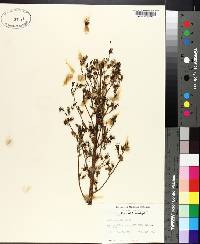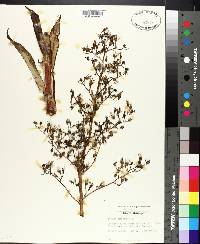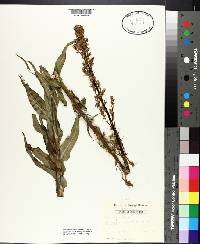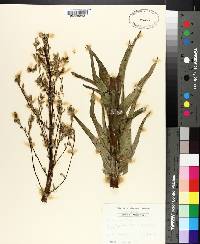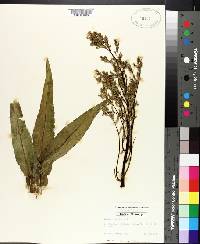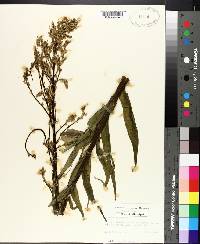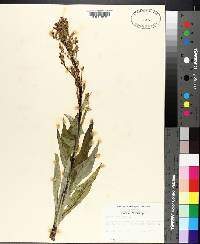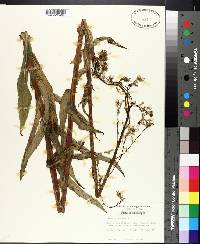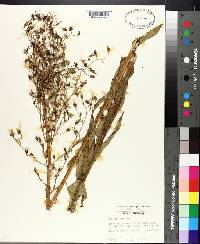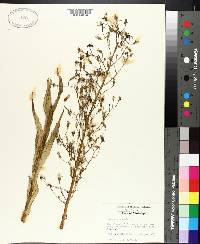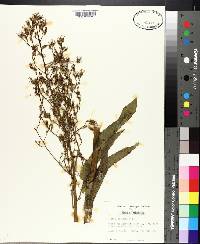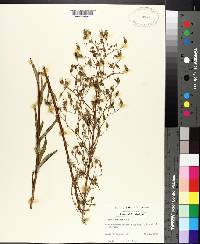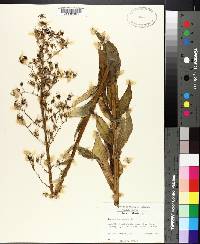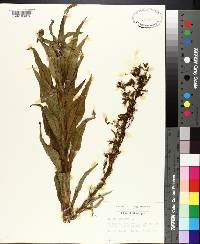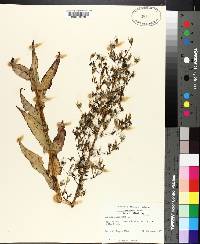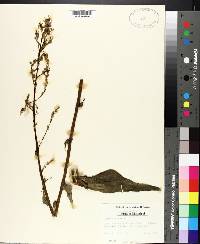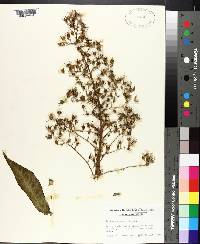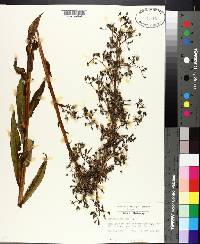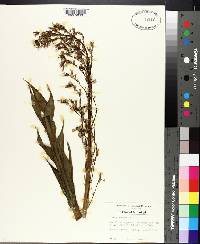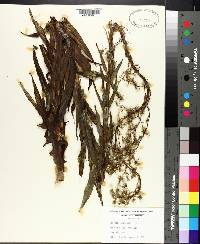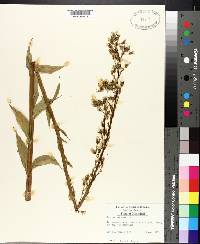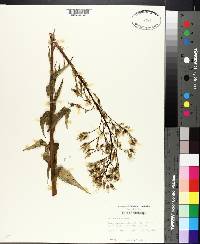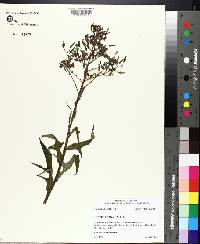
|
|
|
|
Family: Asteraceae
Wild Lettuce, more...Canada Lettuce, Canadian Blue Lettuce
[Galathenium salicifolium Nutt., moreLactuca canadensis f. angustata Wiegand, Lactuca canadensis f. exauriculata Wiegand, Lactuca canadensis f. spinulosa (Jenn.) F. Seym., Lactuca canadensis f. villicaulis Fernald, Lactuca canadensis var. canadensis , Lactuca canadensis var. integrifolia Farw., Lactuca canadensis var. latifolia Kuntze, Lactuca canadensis var. longifolia (Michx.) Farw., Lactuca canadensis var. obovata Wiegand, Lactuca canadensis var. typica Wiegand, Lactuca sagittifolia Ell., Lactuca steelei Britton] |
Biennials, (15-)40-200(-450+) cm. Leaves on proximal 1/2-3/4 of each stem; blades of undivided cauline leaves oblong, obovate, or lanceolate to spatulate or lance-linear, margins entire or denticulate, midribs sometimes sparsely pilose. Heads in ± corymbiform to paniculiform arrays. Involucres 10-12+ mm. Phyllaries usually reflexed in fruit. Florets 15-20+; corollas bluish or yellowish, usually deliquescent. Cypselae: bodies brown (often mottled), ± flattened, elliptic, 5-6 mm, beaks ± filiform, 1-3 mm, faces 1(-3)-nerved; pappi white, 5-6 mm. 2n = 34. Flowering Jun-Oct. Roadsides, swamps, salt marshes, thickets; 0-2200 m; B.C., Man., N.B., N.S., Ont., P.E.I., Que., Yukon; Ala., Ariz., Ark., Calif., Colo., Conn., Del., D.C., Fla., Ga., Idaho, Ill., Ind., Iowa, Kans., Ky., La., Maine, Md., Mass., Mich., Minn., Miss., Mo., Mont., Nebr., Nev., N.H., N.J., N.Mex., N.Y., N.C., N.Dak., Ohio, Okla., Oreg., Pa., R.I., S.C., S.Dak., Tenn., Tex., Utah, Vt., Va., Wash., W.Va., Wis., Wyo.; Mexico; Central America; Eurasia. Leafy-stemmed annual or usually biennial 3-25 dm, glabrous or occasionally coarsely hirsute, often ±glaucous; lvs highly variable, entire or toothed to pinnately lobed or cleft, sagittate or sometimes narrowed to the base, 10-35 נ1.5-12 cm; heads numerous, small, with 13-22 yellow fls; invol 10-15 mm in fr; achenes blackish, very flat, with a median nerve on each face, transversely rugulose, 4.5-6.5 mm overall, the slender beak from a little more than half to about as long as the body; mature pappus 5-7 mm; 2n=34. Fields, waste places, and woods; Que. and P.E.I. to Sask., s. to Fla. and Tex. July-Sept. (L. sagittifolia; L. steelei) Gleason, Henry A. & Cronquist, Arthur J. 1991. Manual of vascular plants of northeastern United States and adjacent Canada. lxxv + 910 pp. ©The New York Botanical Garden. All rights reserved. Used by permission. From Flora of Indiana (1940) by Charles C. Deam [Deam recognizes four varieties. The lower leaves of the typical variety have linear-falcate, usually entire lobes. This form is] infrequent to frequent in dry, open woodland throughout the state; also along railroads and rarely in fallow fields. Wiegand describes also f. angustipes of this variety which I have not seen in Indiana. [Variety integrifolia has lanceolate, unlobed leaves. This form is] infrequent to frequent in moist or dry, open woodland in the southern part of the state. I have only a few specimens from the northern part. It is also found along roadsides and fences. [In variety latifolia the lower leaves have broadly falcate or obovate lobes. This form is] infrequent to frequent throughout the state although I do not have a specimen from the dune area. It is found chiefly in moist or dry, open woodland and occasionally along roadsides and railroads. Wiegand describes also f. exauriculata of this variety with leaves which are not sagittate at the base. I have not seen it in Indiana. [Variety obovata is said to have toothed but unlobed, obovate to oblanceolate leaves. It is] infrequent in open woodland and along roadsides in the southern part of the state. Wiegand also describes f. stenopoda of this species with the leaves not sagittate. I have not found this form in Indiana. …… Indiana Coefficient of Conservatism: C = 2 Wetland Indicator Status: FACU |
|
|
|
This project was made possible in part by the Institute of Museum and Library Services [MG-70-19-0057-19].
Powered by Symbiota

